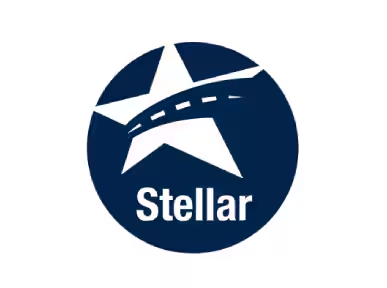
Source: STMicroelectronics
By Bolaji Ojo
What’s at stake:
Microcontrollers are the workhorses advancing automakers’ transition to the software-defined vehicle era. In the skirmishes that have broken out among suppliers, the winning formula must be the ability of MCUs to help OEMs with over-the-air upgrades, design scalability and lower costs. STMicroelectronics’ new “Stellar MCUs with xMemory” delivers these, company executives said. Will this be enough to tip the scale in the company’s direction or are competitors hot on its heels with matching rival products?
STMicroelectronics N.V. believes it has a product that will help achieve its objective of doubling microcontroller revenue by 2030. Whether the automotive Stellar MCU with xMemory built on the embedded phase-change memory technology announced today by the semiconductor supplier will deliver on its promises now rests with the market.
Having slipped behind new MCU market leader Infineon Technologies AG, the Geneva-based chipmaker can certainly use as many winning products as it can develop, produce and get designed into automotive OEMs’ products over the course of the next several years. But does the Stellar MCUs with xMemory fit the bill? Davide Santos, automotive MCU director at the company, believes this is the case, relaying enthusiastically its attributes Wednesday, during a presentation to analysts and the media. The MCU fits neatly into ST’s SDV portfolio plans, he said, adding it offers the promise of continuous innovation and operational efficiency without any major additional development costs.
“We have [automotive] transformations that are on three axes: electrifications – electrical drive trains, battery management, new and more efficient power conversion system – and; a second axis of digitalization – the autonomous and advanced driver assistance systems,” Santos said. “The third axis is the software defined vehicles – the possibility to continuously embrace change and introduce new features over the lifetime of the vehicle.”
ST’s Stellar MCUs aren’t new. They are a staple of the company’s auto MCU offerings already. What’s different is the Stellar MCU with xMemory, an offering that comes with PCM, delivering a “robust and flexible memory concept to create highly performant, adaptable microcontrollers for automotive usage,” according to Axel Aue, an executive with Bosch. The ST Stellar MCU with xMemory “provides application advantages compared to other memory technologies, such as RRAM and MRAM,” Aue said, in a statement.
The over-the-air upgradability, improved cost-efficiencies and the possibility for further reduction in the number of ECUs (electronic control units) in the vehicle are critical cost-saving architectural improvements, too, observed Luca Rodeschini, GM, general purpose and automotive microcontrollers division, at ST.

“Stellar with xMemory will streamline the car architectures of tomorrow, making them more cost-effective and significantly reduce development time for carmakers,” Rodeschini said. “This innovative solution enables the same hardware to ensure carmakers have the infrastructure and capabilities with the headroom to continuously innovate their products over time. It provides peace of mind to introduce new innovations in digitalization and electrification, allowing them to stay ahead in the market and extend the lifetime of their vehicles.”
Santos and other sources admit that the auto MCU market is still evolving, shifting as companies define and expand the scope of applications, functions and capabilities they see for the emerging market for SDVs. As the market evolves, MCU suppliers have been digging deeper into their product arsenal and developing innovations that they hope will give them an edge in negotiations with OEMs. One analyst cited by ST in its press release noted that the Stellar xMemory MCU could have an edge with customers.
“Engineers can avoid costly hardware redesigns to support software features,” said Anshel Sag, principal analyst with Moor Insights & Strategy. “As software inevitably grows, whether during the initial development or through post-launch OTA updates, the same platform can be upgraded in the field, significantly reducing time-to-market and maintenance costs. A solution like Stellar with xMemory also enables simplified logistics and bill of material efficiency.”
The Stellar xMemory MCU offers auto OEM design engineers the opportunity to expand memory requirements during the lifecycle of the vehicle, ST said. This also adds to the flexibility in the design environment, according to Santos. The advantages include higher density, reliability, radiation immunity, and low-power consumption, he said, adding that the Stellar xMemory MCUs will be available this year.
“There are three major advantages. The first is innovation. The technology grants the best density and offers incrementally valuable memory for developing and adapting to changes in the market,” Santos said. “The second is operational efficiency, using fewer part numbers, [and] allowing easier deployment. The third is time-to-market improvement, to incrementally put new features in the market.”
Bottom line:
STMicroelectronics tapped existing technologies to increase the leverage its new Stellar MCUs with xMemory have in the automotive industry. The advantages gained by ST, though, will attract competitive offerings from rivals. The jostling for an edge will intensify in the microcontroller market as companies enhance their range of SDV functionalities, with over-the-air updates, AI features and cloud connectivity.
Related articles:
NXP’s Sensing and Edge AI Play is More than Just About SDVs
Embedded Quest 2025: MCU Vendors Step up Edge AI Play
NXP Heats Up Auto Play with TTTech Auto Buy
By Bolaji Ojo is publisher and managing editor of the Ojo-Yoshida Report. He can be reached at [email protected].
Copyright permission/reprint service of a full Ojo-Yoshida Report story is available for promotional use on your website, marketing materials and social media promotions. Please send us an email at [email protected] for details.
